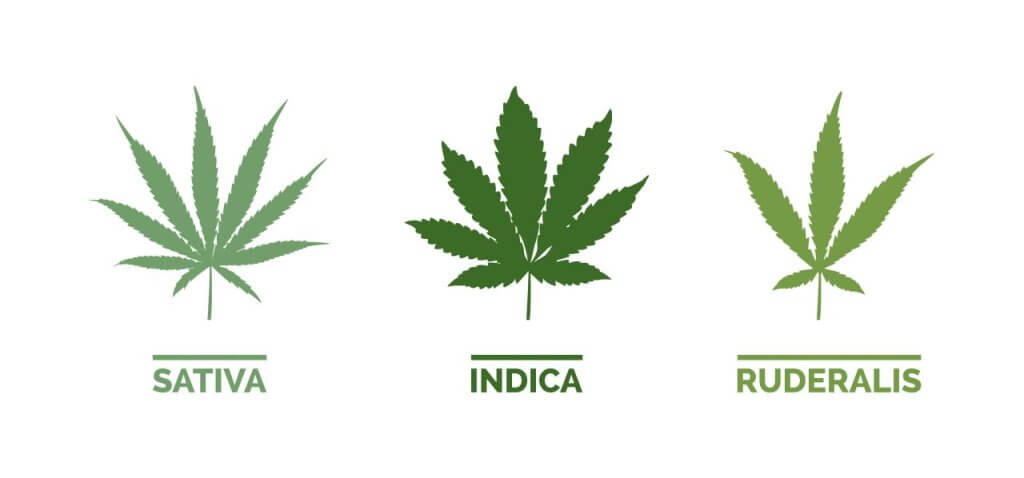Free Tropical Runtz seeds on orders over $150!
There are tens of thousands of distinct cannabis varieties, each unique growth characteristic. They are Sativa, Indica, Ruderalis strains of cannabis.
There are three distinct sets of genetics within the Cannabaceae family of plants (to which all cannabis cultivars belong) described by these designations, each with its own set of characteristics. Helping farmers make educated decisions about what they want to cultivate and the preparations needed to acquire the ideal cannabis for them.
Cannabis is a much-diversified plant that you can break down into thousands of strains, dozens of classifications, and even numerous species. Navigating the legal cannabis market might be difficult if you don’t know where to begin since each subspecies has distinct qualities.
Commercial sectors, such as agriculture and textiles, will benefit from specific subspecies, while medical markets benefit from others. Before putting up a cannabis investment portfolio, it is critical to understand the underlying distinctions between the various strains. Knowing what a business is trying to accomplish and how it can affect its product lines and services in the future is an invaluable skill.
In light of this, we’ll examine the three varieties of cannabis: Sativa, Indica, and Ruderalis. You can now build a solid understanding of the legal cannabis industry’s primary product around this knowledge.
To learn the difference between Sativa, Indica and Ruderalis, see below:
It is endemic to tropical climes, where long periods of strong sunshine are the norm and may grow six meters tall. Sativa strains have adapted to their habitat by developing big pointed leaves with minor markings. The nodes are spaced 3–6 inches apart on their spread branches.
When it comes to Indica vs. Sativa, Sativa can tolerate more significant humidity levels than their cousins. In contrast, Sativas take longer to blossom, necessitating ample area. A competent grower and a well-prepared greenhouse or grow room are necessary to cultivate the Sativa subspecies.
Indica strains are the complete antithesis of Sativa strains in almost every way. It has a more compact branch structure and grows to a lower height. The leaves are also smaller, with more comprehensive, somewhat marbled fingers, making them easier to handle. Indica strains resemble a tiny Christmas tree with enormous leaves at the base.
Indicas, on the other hand, are more susceptible to mold growth when exposed to high humidity. Because of their shorter blooming time, they are a popular choice among home gardeners. Harvesting may be done more than once a year in a controlled environment (such as an indoor grow room).
There are a few branches and a fibrous stem on Ruderalis plants, midway between the Sativa and Indica strains. It is relatively uncommon for them to reach a maximum of four feet in height. The Ruderalis subspecies, native to Central and Eastern Europe and Asia, have developed an ability to thrive under challenging conditions.
The blossoming of the subspecies is the primary distinction between Ruderalis and either Sativa or Indica. When the seasons change, a cannabis plant often transitions from the vegetative phase to the blooming phase. However, the Ruderalis subspecies have evolved an in-built timer for blooming, independent of seasonal fluctuations, because of Europe’s reduced sunshine intensity. The amount of time the plant spends in the vegetative stage before it automatically flowers is determined by genetics.
Ruderalis are crucial for breeding autoflower seeds.

This is a complex subject since no one subspecies is better than another. It’s impossible to generalize the effects and applications of all of them. Poor genetics and care will always lead to a defective product, whatever the subspecies. A well-maintained Ruderalis may be more lucrative than a Sativa that is neglected. One of the most important considerations is a company’s capacity to produce and the expertise of its farmers.
You now have a much better grasp of the distinctions between Indica, Sativa, and Ruderalis. There are several factors to consider when a grower is selecting a strain. Sativa and Indica dominate the cannabis market, but Ruderalis has a role. Knowing how each variety grows is essential to boosting grower confidence, whatever of the kind you choose to farm.





Offers
This product is not for use by or sale to persons under the age of 18. This product should be used only as directed on the label. It should not be used if you are pregnant or nursing. Consult with a physician before use if you have a serious medical condition or use prescription medications. A doctor’s advice should be sought before using any hemp products. All trademarks and copyrights are property of their respective owners and not affiliated with nor do they endorse this product. These statements have not been evaluated by the FDA. This product is not intended to diagnose, treat, cure or prevent any disease. By using this site you agree to follow the Privacy Policy and all Terms & Conditions printed on this site. All products contain less than 0.3% Cannabinoid-compliant with applicable Federal Laws. Please make yourself aware of any and all applicable laws regarding hemp in your jurisdiction. Premium Cultivars accepts no liability or responsibility regarding germination laws in any specific locale state or national jurisdictions.THCA products are not available for shipment to the following states: Hawaii, Idaho, Minnesota, Oregon, Rhode Island, Utah, Vermont *Note: Products with Total THC content above 0.3% must not be shipped to these states.
We want to help you get your hands on the seeds you want, take 20% off your next purchase when you enter your email below!
We want to help you get your hands on the seeds you want, take 20% off your next purchase when you enter your email below!